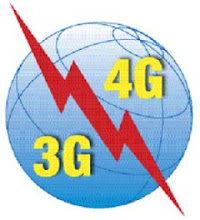


CELL SEARCH IN 3G: - Frequency and Time Synchronization in 3G
This procedure takes place when the power is turned on in the UE.
The synchronization procedure starts with downlink SCH synchronization.
The UE knows the SCH primary synchronization code, which is common to all cells.
The slot timing of the cell can be obtained by receiving the primary synchronization channel (P-SCH) and detecting peaks in the output of a filter that is matched to this universal synchronization code.
The slot synchronization takes advantage of the fact that the P-SCH is only sent during the first 256 chips of each slot. The whole slot is 2,560 chips long.
The UE can determine when a slot starts, but it does not know the slot number yet (there are 15 slots in each frame), and thus it does not know where the radio frame boundary may be.
Thereafter the UE correlates the received signal from the secondary synchronization channel (S-SCH) with all secondary synchronization codes (SSC), and identifies the maximum correlation value.
The S-SCH is also only sent during the first 256 chips of every slot.
Each code group identifies eight possible primary scrambling codes, and the correct one is found by correlating each candidate in turn over the CPICH of that cell.
Once the correct primary scrambling code has been identified, it can be used to decode BCH information from the primary common control physical channel (P-CCPCH), which is covered with the cell’s unique primary scrambling code.
The primary synchronization code is common to all cells, and it is used to gain slot synchronization from the P-SCH.
The primary scrambling code is unique to a cell; it is gained from the CPICH and used to demodulate common control channels

No comments:
Post a Comment